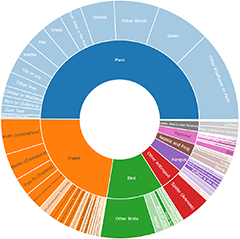Social or paper-nest wasps (Vespidae, Polistinae & Vespinae)
Announcements
There are currently no announcements.
Discussion
MichaelBedingfield
wrote:
18 Oct 2025
Female, sluggish after long winter.
Polistes (Polistes) chinensis
MichaelBedingfield
wrote:
30 Sep 2025
Lisa, see the Friends of Grasslands newsletter, November 2023, page 6 :- https://www.fog.org.au/Newsletters/2023-11newsletter.pdf
Polistes sp. (genus)
LisaH
wrote:
30 Sep 2025
Amazing - and the nests are incredible structures, so precise and mathematical
Polistes sp. (genus)
MichaelBedingfield
wrote:
30 Sep 2025
These are female wasps, laying eggs for new young to add to the growth of the colony.
Polistes sp. (genus)
Top contributors
- AlisonMilton 78
- RodDeb 53
- TimL 45
- Christine 43
- Hejor1 42
- MichaelBedingfield 40
- KylieWaldon 33
- HelenCross 23
- Mike 17
- MatthewFrawley 17
Top moderators
- SimoneC 211
- MichaelMulvaney 186
- MichaelBedingfield 147
- KimPullen 113
- DiBickers 102
- Amata 49
- Curiosity 8
- Mike 4
- RogerF 3
- CharlesDove 3












